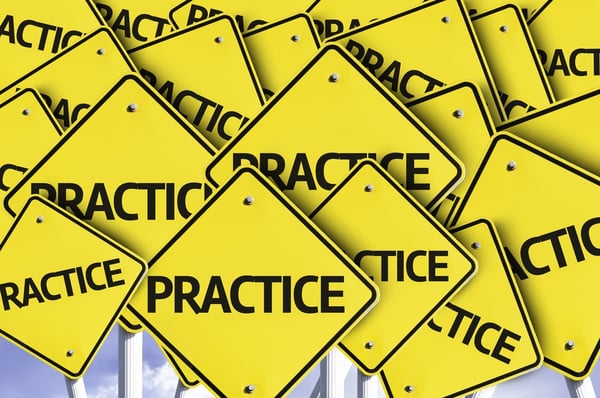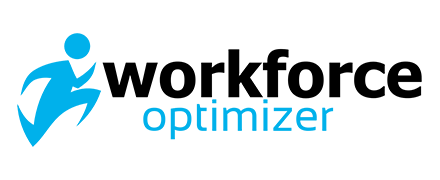Reading time: 5 minutes

So your busy, business is booming, but yet you still think you can get more out of your team. All too often companies strive to improve productivity and utilization without truly understanding the current state of play. In this article we discuss some simple ways in which you can analyze the performance of your team to help drive productivity.
It’s an age old phrase but, “You can’t manage what you can’t measure”. This is too true of employee productivity and utilization where many variables govern how productive or how well utilized an employee is.
Let’s take the example of a small business delivering products and services. What’s more productive, an employee who works 8 hours a day on internal product development or service delivery, or a similar employee who works 10 hours per day but spends 3 hours on administration, breaks and socializing – on face value, our 8 hour a day employee looks the most productive but we have no idea from hours alone how this impacts the goals and objectives of the business or compares to what the employee was planned to do.
Let’s take the example of a consultant, effective utilization isn't just about working loads of hours, it’s about how many of those hours are chargeable and billable, but again, if the consultant is missing deliverables and the customer has low satisfaction, then actually how productive are they. Over the years I have worked with many sales people who work less hours and achieve target, simply, because they are better planners and make more effective use of their time.
So there are many factors that impact productivity and utilization, however, firstly, and most importantly you will need a grasp of how your employees are currently spending their time, timesheet software will provide a good starting point here allowing you to track employee hours against projects and activities.
This is a very simplified argument though, as most employees will have different skill sets, knowledge and experience which obviously mean that there is likely to be different levels of productivity. However, the data provided by your timesheet software will be invaluable in providing you with an understanding of how your employees are currently spending their time, and what proportion is spent on productive activities.

Plan, plan and plan (Again)
With your timesheet system implemented, you now have a good understanding of what work your employees have performed and how that translates into Productivity and Utilization. However, what this information doesn’t tell us is how this compares to what work employees were planned to do.
There’s no point stressing that an employee is only 10% utilized on chargeable work if that was what was planned in the first place or if that’s all that your current contracts dictate. One way of looking at this is if you don’t have a plan, your utilization and productivity figures really do not represent the status of the business, your current workload and the effectiveness of your managers.
A number of tools are available such as project planning software and resource scheduling software which will enable you to schedule your employees on tasks, assignments and/or deliverables, most importantly they provide management with useful information on the planned utilization and productivity of employees. You can then use this information to analyze Key Performance Indicators (KPI’s) such as planned utilization vs. actual utilization, planned deliverables vs. completed deliverables.
These figures will provide a far more accurate picture of how your employees are performing rather than just looking at actual utilization. What’s more, planning and scheduling will also help you balance your resources, identify poorly utilized resources upfront as well as identify future skills shortages and training requirements which will all have a positive effect on future productivity and utilization.
Manage Customer Expectations
Having been involved in many timesheet software and project management software implementations one of the most common traps that many organizations fall into prior to implementing a tool or formalizing a project management process is that not enough attention is placed on managing the customer’s expectations prior to delivering the project. For example, Sales Representatives are eager to sell, or may not have the experience to provide realistic estimates or timeframes. Project Managers have not highlighted the risks, deliverables and acceptance criteria associated with the project.
All this leads to an overall reduction in the productivity of your employees during project delivery, for example, Account Managers constantly dealing with customer issues rather than up-selling, Project Workers firefighting project issues rather than focusing on the core deliverables. For this reason it is important that you implement some form of project management process in your business that fully encapsulates your entire product or service delivery process from initial enquiry through to supplier management and project delivery.
By ensuring that everybody involved in the product and service delivery process has a clear understanding of the scope, risks, deliverables and acceptance criteria associated with your projects there is likely to be less project issues, less slippage and fewer budget overruns. Leave your resources in all areas to focus on more productive work. Many project management software tools are available to help you implement a simple clear project management process.
Create a Productive Working Environment
This doesn’t mean getting a nice fish tank or branding everything to death in your office (although aesthetics and brand are still key depending on your type of business!). It’s about creating a productive working environment where employees can share ideas, tap into each other’s knowledge and limit the impact of any absent resource. This is where some form of project and team collaboration is important, as it is commonly recognized that working together can accomplish more.
By providing your project team members with a platform where they can work in synergy, share ideas and share knowledge; and where each individual team members contribution is focused on a common goal, your business will quickly benefit from greater innovation, better problem solving and greater efficiency in project delivery. The result: increased productivity and utilization.

Tip 1: Define variables
If you sell services you will want to measure chargeable utilization, ensure you define variables that enable you to measure utilization and productivity that is applicable to your business.
Tip 2: Encourage collaboration
Boost your productivity by creating an environment where your team members can easily share knowledge, ideas and lessons learned. This will not only improve individual productivity it will help improve project standards and service delivery.
Tip 3: Improve your planning
Improving your resource deployment upfront should not only improve your future resource productivity and utilization, it will also give you a more realistic view of the health of the organization by comparing planned versus actual.

[1] https://www.keyedin.com/keyedinprojects/article/5-simple-ways-to-improve-employee-utilization-and-productivity/



